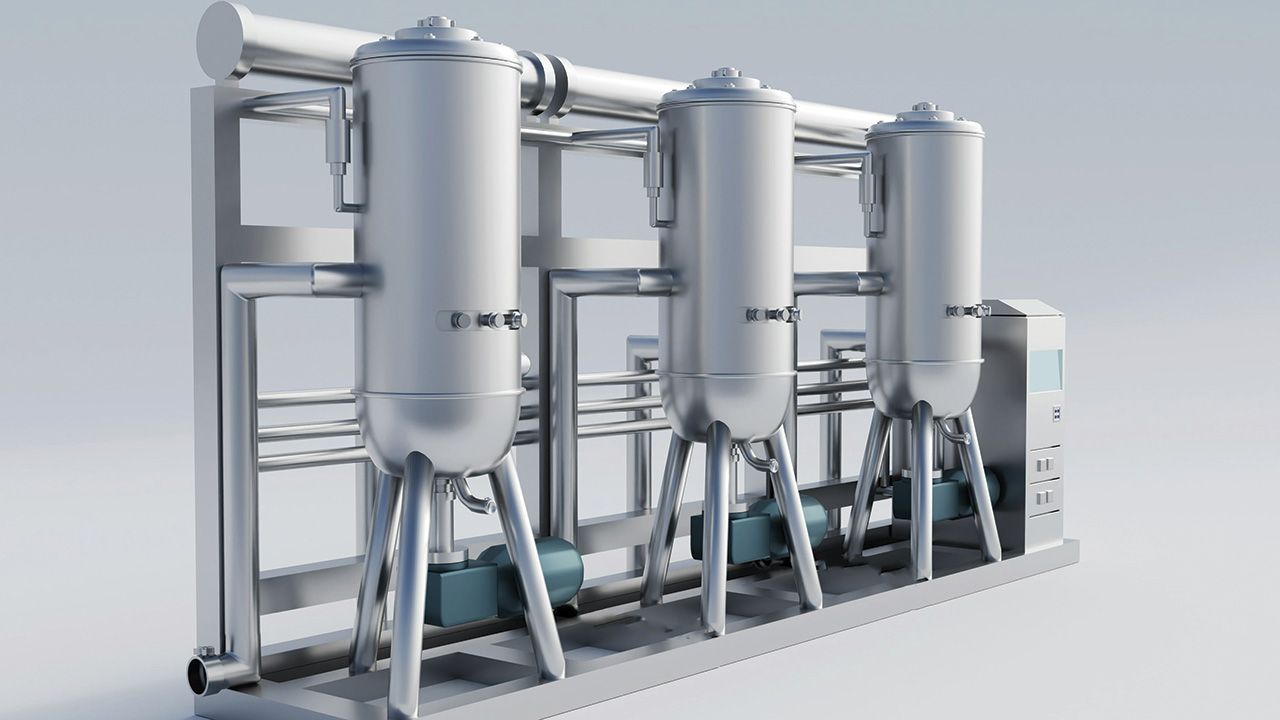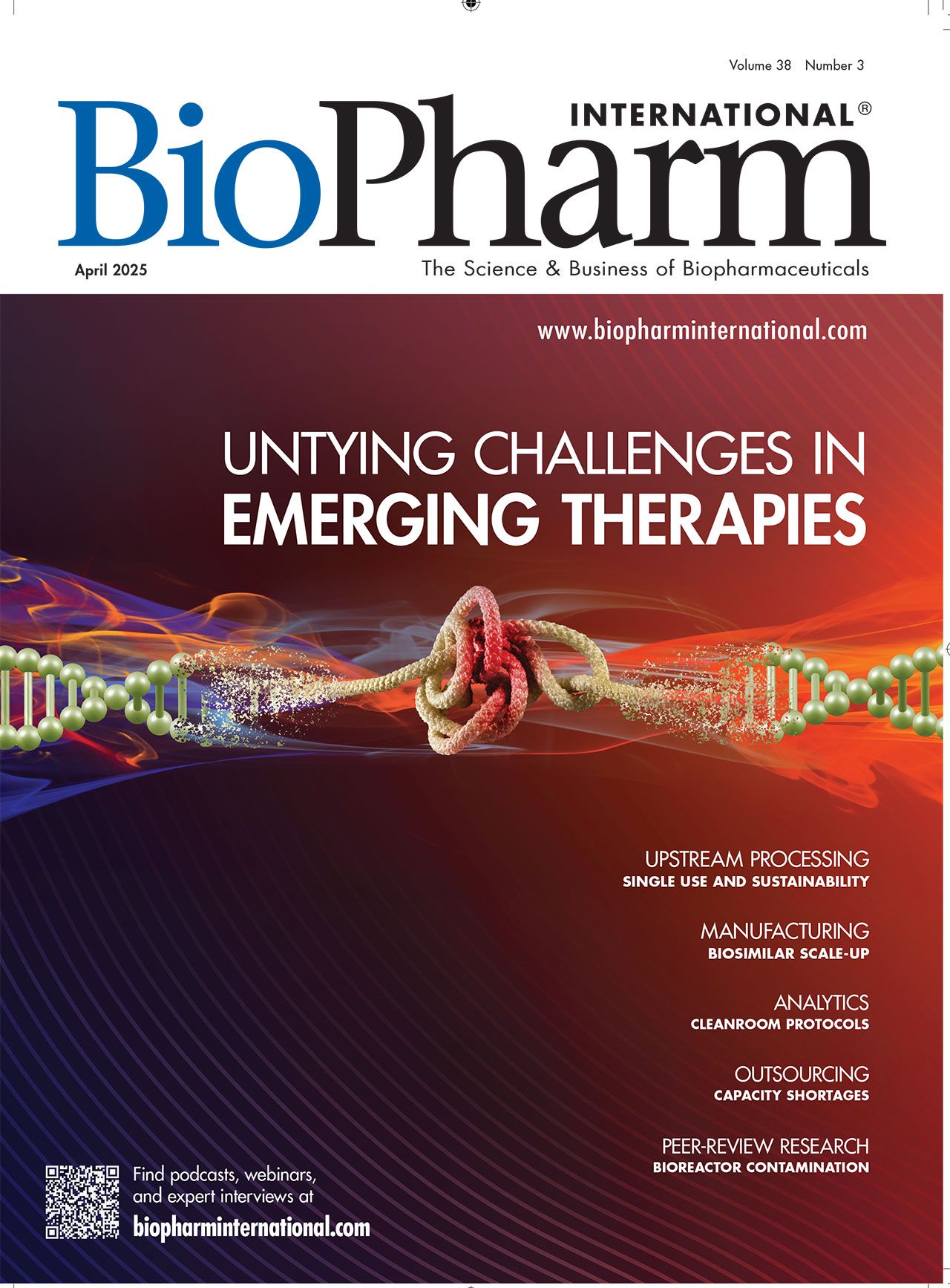Single Use and Sustainability in Upstream Processing
Wider adoption of single-use technologies and systems is aligning with sustainability goals for the industry.
Love Employee – Stock.Adobe.com

Single-use technologies (SUTs) and single-use systems (SUS) have become well established in biomanufacturing, but with growing focus on sustainability in the industry, the importance of how and where these systems contribute to sustainability efforts needs discussion. BioPharm International® spoke with Zach Page-Belknap, sustainability specialist, associate, LEED GA, at CRB, and Emelia DeForce, PhD, senior program manager, Sustainable Science and Product Stewardship, at Genentech on the benefits of SUS compared to traditional stainless-steel facilities and how the industry may move forward with the sustainability goal in mind.
Industry adoption
BioPharm: What, and when, was the tipping point for the biopharma industry to really open its doors to SUT/SUS?
Page-Belknap (CRB): The literal tipping point for single-use technology was the introduction of wave bag technology back in the mid-1990s. However, widespread adoption of single-use technology proliferated in the 2010s as the technology began to grow in scale, rivaling bioreactor volumes that were achievable only in stainless-steel vessels at the time (≥ 2000 L). Supporting components have followed suit, from connectors, to tangential flow filtration (TFF), and even disc-stack centrifugation, all now available in reliable disposable applications. Also, seeing as single-use manufacturers have been pushing to offer the ‘first-of-kind’ for single-use technologies, a parallel proliferation in the availability of materials, simply based on the number of manufacturers in the market, has supported the growth and overall market share of single-use processes compared to stainless steel. However, the pandemic did highlight a significant drawback of single-use technology as supply chains were subject to volatility and therefore additional risk to operations relying on the technology, which has resulted in a greater balance of single-use material versus stainless steel at present.
DeForce (Genentech): The landscape of [bio]/pharmaceutical manufacturing is changing. The future of manufacturing now relies on more nimble processes to produce smaller scale, more personalized medicines that can have an even greater impact for individual patients. This is where SUT and SUS come into play. For example, at Genentech’s Clinical Supply Center in South San Francisco, we are modernizing manufacturing to keep pace with the increasingly personalized nature of health care. In addition, the company’s new commercial biologics facility in Oceanside, Calif., will be soon fully operational. By standardizing the design of the two facilities, both will incorporate the same technologies and sustainability practices of the Clinical Supply Center.
BioPharm: What have been the greatest benefits that SUT and/or SUS brought to the table in upstream processing?
DeForce (Genentech): By standardizing the SUT and SUS processes in our Clinical Supply Center and the new commercial facility in Oceanside, we will significantly reduce the amount of time needed to transfer production from the clinical to the commercial site as well as the turnaround time from one molecule to the next.What used to take many months will be reduced to days which will ultimately get medicines to patients faster.Also, by permitting concomitant small batch productions without product-to-product changeover, the possibility of producing therapies for small populations of patients is realized in a way that advances our vision of providing three to five times the benefit to patients at half the cost to society.
Page-Belknap (CRB): The top three upstream benefits, without question, are process closure, water savings, and adaptability of manufacturing equipment.
Process closure with a proper risk assessment presents large-impact benefits to manufacturers, all of which are easier to attain with the use of single-use systems. Closed processing reduces upstream risk to exposure while simultaneously enabling lower air change rates, and reduced air change rates can significantly cut a facility’s CapEx [capital expenditures], OpEx [operating expenses] and CO2e [carbon dioxide equivalent] emissions (1).
Water savings are inherent with disposability and the absence of cleaning/sanitizing/sterilizing permanent systems but also can be realized in reduced cooling tower load from process closure.
Finally, it is not that stainless-steel systems aren’t adaptable; they are. However, the level of effort to make even small changes to stainless-steel equipment in cleanrooms typically institutes a reduction in cadence, at minimum, if not an outright shutdown to support cutting, welding, re-passivation, etc. Single-use systems can be validated much faster and easier while catering to ballroom design approaches that could support a particular modality one day, and a completely different modality the next, in principle.
Single-use [systems] can ease some anxiety around cleaning and environmental exposure (in addition to saving time avoiding cleaning validation studies), but simultaneously [they present] other potential vulnerabilities through additional connection points, leaks, leachability, etc.
Changed perceptions
BioPharm: How has the perception of single-use changed, and what aspects of SUT or SUS are being made ‘sustainable’?
Page-Belknap (CRB): One area in particular involves packaging. With the advancement of process closure techniques coupled with gamma irradiation for pre-sterilization, materials can be delivered to clients closed and without additional single-use packaging/bags to maintain a sterile boundary. Tube welding is another means of reducing waste by negating the need for additional connectors. The avoidance of connectors winds up being a two-fold benefit as it helps to homogenize waste stream material, which is commonly an issue when trying to recycle/upcycle single-use plastic waste streams. The industry has identified the amount of waste associated with single-use manufacturing as a priority issue, and some manufacturers have made strides to take back their used materials, albeit with limited longevity for those programs. I think the industry is still moving in the right direction to optimize and reduce where possible, but the changes have been incremental in comparison to the amount of waste currently generated.
DeForce (Genentech): During the design phase for the Clinical Supply Center in South San Francisco, a full end-to-end life cycle assessment (LCA) was performed by Aspire Sustainability (Breckenridge, Colo.). The assessment evaluated the environmental impact of [a] SUT facility versus a conventional stainless-steel facility at a 2000-L scale for a typical monoclonal antibody process. Based on the LCA results, the implementation of SUT allows Genentech to improve the sustainability of biologics manufacturing by reducing our CO2 emissions by 17%, energy consumption by 25%, and water usage by 28%. Through execution of multiple projects optimizing HVAC [heating, ventilation, and air conditioning], sterilization, and water for injection, these improvements have contributed to impactful reductions in energy, water, and chemical use, as well as reduction in aqueous waste.
In regards to end-of-life solutions for our SUT and SUS materials, we are keeping a pulse on the changing landscape of recycling materials in California and collaborating with our suppliers to tailor solutions and find innovative approaches for handling the waste.We are also working internally on ways to use less SUT and SUS materials in our facilities by increasing our yield of product per batch, using novel approaches to elongate the life of our manufacturing supplies, using less chemicals for cleaning and therefore lowering our emissions. Instead of building up our waste stream, we are working to find ways to implement circular solutions which will ultimately lower our waste footprint.
BioPharm: Comparing SUS to conventional stainless-steel facilities, which is more sustainable at the end of the day, and why?
DeForce (Genentech): The Clinical Supply Center in South San Francisco and the new Oceanside facility use 25% less energy and 28% less water compared to our other facilities along with sourcing 100% of its electricity from renewable sources, including onsite solar generation.The SUT facilities have eliminated the need for cleaning chemicals, therefore, lowering the emissions and hazardous waste.
Page-Belknap (CRB): To sum up which of the two is the more sustainable succinctly and frustratingly, ‘it depends’. There are several factors at play in this conversation (2). Single-use outperforms stainless steel with adaptability, lack of water for cleaning/sanitizing/sterilizing, process closure, and reduced equipment footprint/density. On the other hand, stainless steel generates less single-use waste, scales to larger volumes, mitigates supply chain vulnerabilities, and has the benefit of technological maturity. The difference between the two depends on the priorities of the client in question and the manufacturing process, which is why hybrid facilities are becoming much more common as single use can provide distinct advantages for some unit operations and stainless steel is more beneficial in others.
The sustainability trend
BioPharm: What are the primary goals of the sustainability trend in the biomanufacturing sector and what role will SUT/SUS play in that future?
Page-Belknap (CRB): I would not say that sustainability is a trend. If you compare similar design categories such as safety and cleanliness, these were also once ‘trends’ that have become central pillars in this industry. Biomanufacturing is very much catching up to other industries that have been practicing sustainability for decades. The high-energy intensity nature of these facilities and the patient need for expedience to market have often served as exceptions for designing facilities that minimize environmental impact. However, there are now countless examples of sustainable biomanufacturing facilities that have paved the way for further innovation by achieving construction timelines that rival ‘code minimum design’. However, the primary goals of sustainable design in biomanufacturing are to mitigate resource consumption across the board, create circular manufacturing processes (material circularity) and strive for net-positive impact on surrounding communities and ecosystems.
Single-use materials aren’t ever going to ‘win’ against stainless steel, but they will continue to play a pivotal role in allowing biomanufacturing processes to be streamlined while also mitigating risk. Autologous ATMP [advanced therapy medicinal product] modalities, for example, critically depend on single-use technology, which enables patient-specific therapies. Scientists and investors alike recognize the potential of these types of therapies to reshape how we approach medicine. Investors have also made it clear that sustainability and transparency are paramount for industry-leading companies in particular, and as a result, the challenges that face single-use technology will be solved to meet market demand, but also because sustainability parallels what healthcare strives for in the first place.
DeForce (Genentech): Genentech together with Roche have made significant progress toward reducing its overall environmental footprint. The Clinical Supply Center—and our next new manufacturing facility in Oceanside—are important examples of how we are advancing toward our corporate sustainability goals to reduce our greenhouse gas emissions by 40%, water use by 20%, total landfill waste by 20% and plastic waste by 20% at our South San Francisco and Oceanside campuses by 2025. We are on a path to achieve true zero emissions by 2045.
References
1. Page-Belknap, Z.; Dove, N.; Boulanger, R. Closed Processing: Biopharma’s Secret Weapon for Sustainability. Am. Pharm. Rev. 2024, 27 (3), 19–25.
2. Page-Belknap, Z. Which is More Sustainable: Stainless Steel or Single-Use Systems? CRB Group, 2023.
About the author
Feliza Mirasol is science editor at BioPharm International®.
Article details
BioPharm International®
Vol. 38, No. 3
April 2025
Pages: 11–13
Citation
When referring to this article, please cite it as Mirasol, F. Single Use and Sustainability in Upstream Processing. BioPharm International 2025, 38 (3), 11–13.
